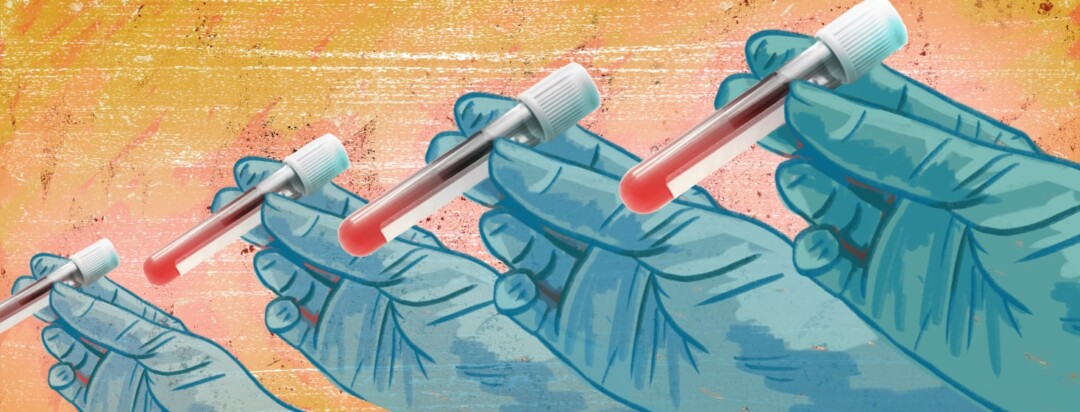PSA Testing – Saving Me Again and Again
It is important to understand that there are men diagnosed with aggressive prostate cancer readings (like mine at a Gleason 9) who can still have PSA levels in the so-called normal range. Conversely there are men whose PSA levels balloon to new heights but remain cancer-free. Medical experts are not 100% sure why it happens.1
If that were not troubling enough, patients often hear conflicting opinions on the true value of PSA testing. Some studies suggest PSA testing has been responsible for a lowered number of deaths in the U.S. and elsewhere. Other studies suggest that the low number of men detected early on may not be substantial enough to justify the cost of testing.2,3
Conflicting information about the PSA test
Of course, some focus on the possible harms, emotionally and physically, that could or might happen to anyone being tested. The endless swirl of conflicting information surrounding PSA testing makes it difficult for men and their loved ones to get clear answers.
Over the past 12 years I have spoken with hundreds of men who decided against PSA testing because some GP or PA or nurse told them a PSA test was not 100% accurate. Worse still is when a front desk assistant tells a patient that their PSA test may not be fully covered by insurance. Give a man that information, and it’s not hard to guess what decision will follow. The costs can vary, but out-of-pocket PSA test costs can sometimes be less than $100 when not covered by insurance.
The ongoing debate is ok until you or someone close to you is diagnosed with advanced late-stage prostate cancer. Sometimes, it is at that point when men are often told their cancer could have been successfully treated years earlier IF only PSA testing had been done sooner.
How PSA testing helped me
By age 70 my PSA numbers had already been on a slow steady rise for about 10 years. My GP reasoned that my growing number of nighttime bathroom visits were due to a slightly enlarged prostate and treated me accordingly. Finally, I had enough and asked to be referred to a urologist. At that appointment, I learned that while a PSA test alone cannot diagnose prostate cancer (the test can only suggest possible warnings signs of it), my advancing numbers suggested it was wise I had come in for that checkup.
The ensuing digital exam revealed the presence of a small lump on the backside of the prostate. Biopsy testing and more revealed I was dealing with a confined Gleason 9.
Had I avoided the increasing test scores from the so-called “unreliable” PSA testing, I would have never set up a visit with a urologist. Had I avoided the simple blood test in 2013, I think chances are pretty good I would not be around today.
Featured Forum
View all responsesMonitoring my levels
Following my prostate surgery in 2013, the PSA score stayed at 0.01 for several years. In 2015 a slow rise was seen in the test scores. Over the next 3 years the test scores climbed to 0.148. Before reaching 0.20, my urologist and now a radiation oncologist suggested it was time to treat the prostate bed with radiation along with a 6-month Lupron shot.
Sure enough, a few months after treatment, the test showed a PSA score of 0.02 or undetectable. I was pleased to see the low score on that test.
Three years later in 2018 I experienced severe pains in my right side and discovered there was no simple PSA type of testing, at least to see if I was dealing with another type of cancer. Learning more required checking into a hospital and undergoing an extensive endoscopic procedure, which finally led to the discovery of a Stage ll non-Hodgkin’s Lymphoma (NHL).
When my numbers jumped once again
Six months after my chemo treatments ended for non-Hodgkin’s Lymphoma, I found myself going in for blood tests every few weeks. Since they were taking blood samples anyway, I asked if a post-op PSA test could be included with the NHL blood draw.
My PSA scores remained constant until June of 2023, when suddenly the PSA numbers jumped from 0.02 to 0.34. My urologist, whom I was not scheduled to see for another year, suddenly called and suggested I take a follow-up PSA test 30 days later. The new score read 0.48. He recommended I go on Lupron to slow the cancer down.
I asked for PMSA PET scan. Days later a small suspicious spot showed up on my hip bone. Thankfully the tumor was small and caught early, which meant it can be treated with stereotactic radiation. Some 4 months after treatments, another PSA showed my PSA as undetectable. Whew!
Deciding whether to get the test
Perhaps the next time you are told that if you are under 50 you don’t need a PSA test... or because you are over 70 you don’t need a PSA test... or PSA testing is unreliable... or your + or -$100 test is not fully covered by insurance, consider the following.
At that very moment you might be looking at a very important decision in your life - especially if you choose to take a pass on that “unreliable” simple blood test.
Community Poll
Do you feel like your treatment was delayed?

Join the conversation